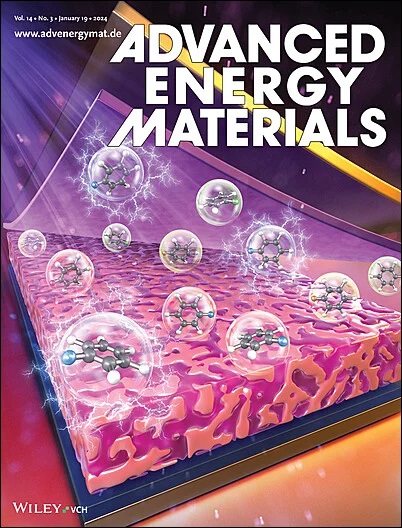Toward Deciphering the Internal Menace of Battery Safety: Soft Short Circuit Versus Hard Short Circuit?
IF 24.4
1区 材料科学
Q1 CHEMISTRY, PHYSICAL
引用次数: 0
Abstract
Internal short circuits (ISC) from Li dendrites pose crucial challenges to the safety and reliability of electric vehicle power batteries. However, fundamental knowledge of how local/microscopic Li‐dendrites initiate ISC and early identification remains unclear. Particularly for soft ISC, presents the transient shorting and un‐shorting that occurs on the microsecond‐to‐seconds timescale. Herein, a general phase‐field‐based multiscale ISC model is developed to monitor the “real‐time” life cycle of Li dendrite‐induced ISC from a physics‐based perspective across micro‐to‐cell level. Validated by ISC experiments, the results show: 1) hard short‐circuits exhibit < 1 Ω contact resistance, while soft short‐circuits range from 10破解电池安全的内在威胁:软短路vs硬短路?
锂枝晶内部短路(ISC)对电动汽车动力电池的安全性和可靠性提出了重大挑战。然而,关于局部/微观锂枝晶如何引发ISC和早期识别的基本知识仍不清楚。特别是对于软ISC,在微秒到秒的时间尺度上出现瞬态短路和非短路。本文开发了一种基于相场的通用多尺度ISC模型,从微观到细胞水平的物理角度监测锂枝晶诱导的ISC的“实时”生命周期。经ISC实验验证,结果表明:1)硬短路表现为<;1 Ω接触电阻,而软短路的范围从102-103Ω, 2)软短路涉及数十/数百个竞争性的锂沉积-溶解循环。对于每个循环,Li溶解持续约70%的循环时间,其中Li局部自放电和溶解抵消了Li生长,与实验观察到的“停滞”枝晶生长一致;3)在软ISC期间观察到“假稳定”电压行为,尽管锂丝连接阴极,电压仍增加;4)当容量损失率>;0.005mAh s - 1时,软ISC永久过渡到硬ISC。这些结果表明,Li -枝晶再溶解(即电压恢复,导致不短路)的主要机制是局部自放电电流密度,这超过了枝晶尖端区域Li -沉积的临界电流密度。
本文章由计算机程序翻译,如有差异,请以英文原文为准。
求助全文
约1分钟内获得全文
求助全文
来源期刊

Advanced Energy Materials
CHEMISTRY, PHYSICAL-ENERGY & FUELS
CiteScore
41.90
自引率
4.00%
发文量
889
审稿时长
1.4 months
期刊介绍:
Established in 2011, Advanced Energy Materials is an international, interdisciplinary, English-language journal that focuses on materials used in energy harvesting, conversion, and storage. It is regarded as a top-quality journal alongside Advanced Materials, Advanced Functional Materials, and Small.
With a 2022 Impact Factor of 27.8, Advanced Energy Materials is considered a prime source for the best energy-related research. The journal covers a wide range of topics in energy-related research, including organic and inorganic photovoltaics, batteries and supercapacitors, fuel cells, hydrogen generation and storage, thermoelectrics, water splitting and photocatalysis, solar fuels and thermosolar power, magnetocalorics, and piezoelectronics.
The readership of Advanced Energy Materials includes materials scientists, chemists, physicists, and engineers in both academia and industry. The journal is indexed in various databases and collections, such as Advanced Technologies & Aerospace Database, FIZ Karlsruhe, INSPEC (IET), Science Citation Index Expanded, Technology Collection, and Web of Science, among others.
 求助内容:
求助内容: 应助结果提醒方式:
应助结果提醒方式:


